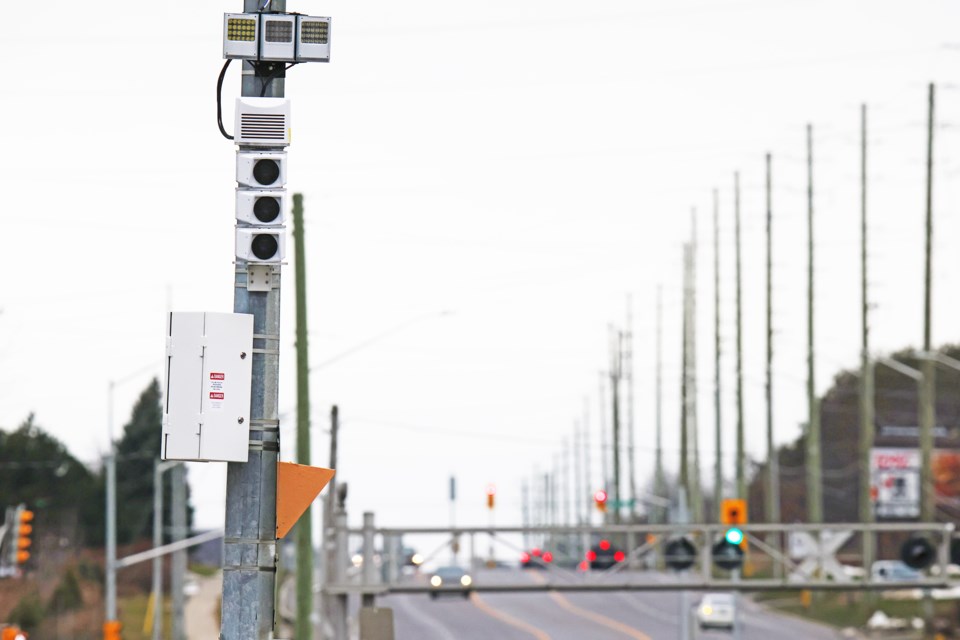BarrieToday welcomes letters to the editor at [email protected] or via our website. Please include your daytime phone number and address (for verification of authorship, not publication). The following letter is in response to a story titled 'Barrie's new speed cameras nabbing lead-foot drivers in a flash,' published Dec. 13.
I’m all for finding ways to reduce driver speeds in Barrie and I thought the speed cameras would have been a good start.
However, the implementation of them leaves me wondering if it’s not made community safety zones more unsafe while creating a money grab for whomever is getting the money from all the tickets they generate.
Previously, and still in other parts of Barrie, in safety zones without cameras, drivers are made aware that the speed has been reduced, time of day dependent, by a flashing yellow light.
Easy-peasy and a no-brainer, and add to the fact that the yellow flashing lights can be seen a long way off, and in all kinds of inclement weather. It notifies the drivers to slow down to 40 kilometres per hour.
Now, however, and only in the zones where there are cameras, the flashing yellow lights have been shut off, and replaced with a sign that tells drivers at what time of day the speeds have been reduced and doesn’t include the dates.
So, why has it made community safety zones unsafe? To answer that we’ll turn to simple math.
In one second, the distance a car travels at 40 km/h is 36.4538 feet (11.111 metres), or about three car lengths. I timed reading the sign that replaced the flashing lights. In several tries, it took me an average of 4.5 seconds to read the sign completely, and English is my first language. Weather was mediocre and overcast. If it’s not your first language or it’s snowing/raining/dark, expect longer read times, if you get through it at all.
Therefore, a car would travel 4.5 by 36.4538 feet, which equals a whopping 164.042 feet (50 metres). That’s a long time to have your eyes off the road.
In fact, road signs around the world are designed to be glanced at to interpret what they mean. Hence the shapes and colour of signs, usually without text, minimizing the time your eyes are not off the road. Less than a second is generally considered the rule, at least when I took my driver’s test.
Next, once the driver interprets what the sign is trying to tell them, they need to look at their clock to figure out whether or not they need to slow down to 40 km/h. More time with eyes off the road.
A game of ‘find the clock on the dashboard’ ensues amongst the plethora of icons on the car’s instrument panel, adding to the frustration that some apps, like GPS, move or remove the clock while it’s running. More time wasted with eyes off the road, while their car careens down the road and quite likely, at this point, captured by the camera.
Yes, I hear the message. Don’t speed, and I agree.
But Barrie is only going to suffer — yes, suffer — incredible traffic congestion in the coming decades, and it’s only going to get worse. Changing all the speed limits within the town to 40 km/h won’t work.
Solution? Barrie, make it easy on drivers and safe for other drivers and pedestrians that share the road.
Turn on the yellow flashing lights. There’s no reason not to since it is a safety zone. I suspect that the number of tickets going out will decrease because drivers will know to slow down, but in the end, isn’t that what we all want? A safer road? I know that’s what I want.
Seaghan Hancocks
Barrie



